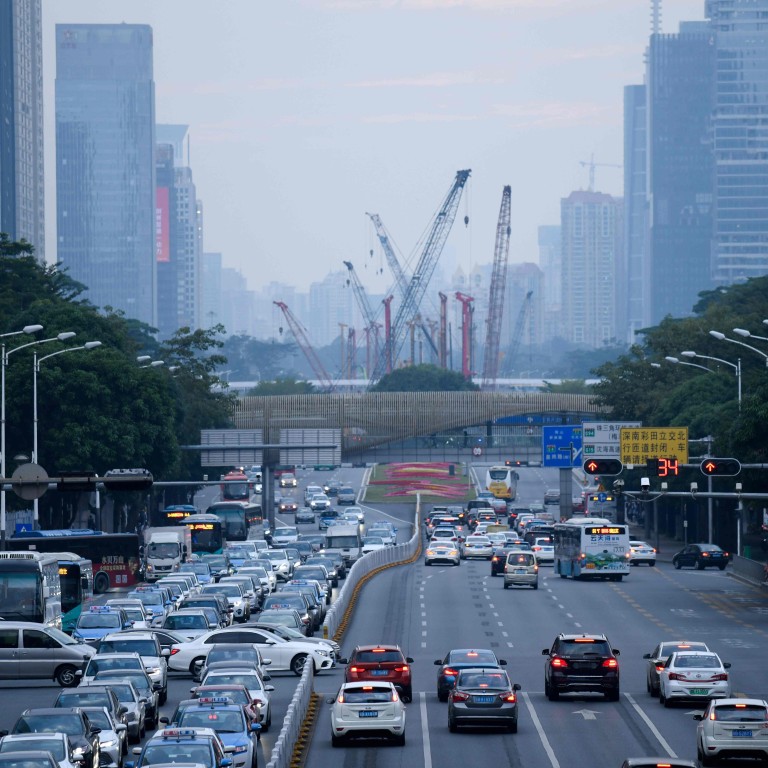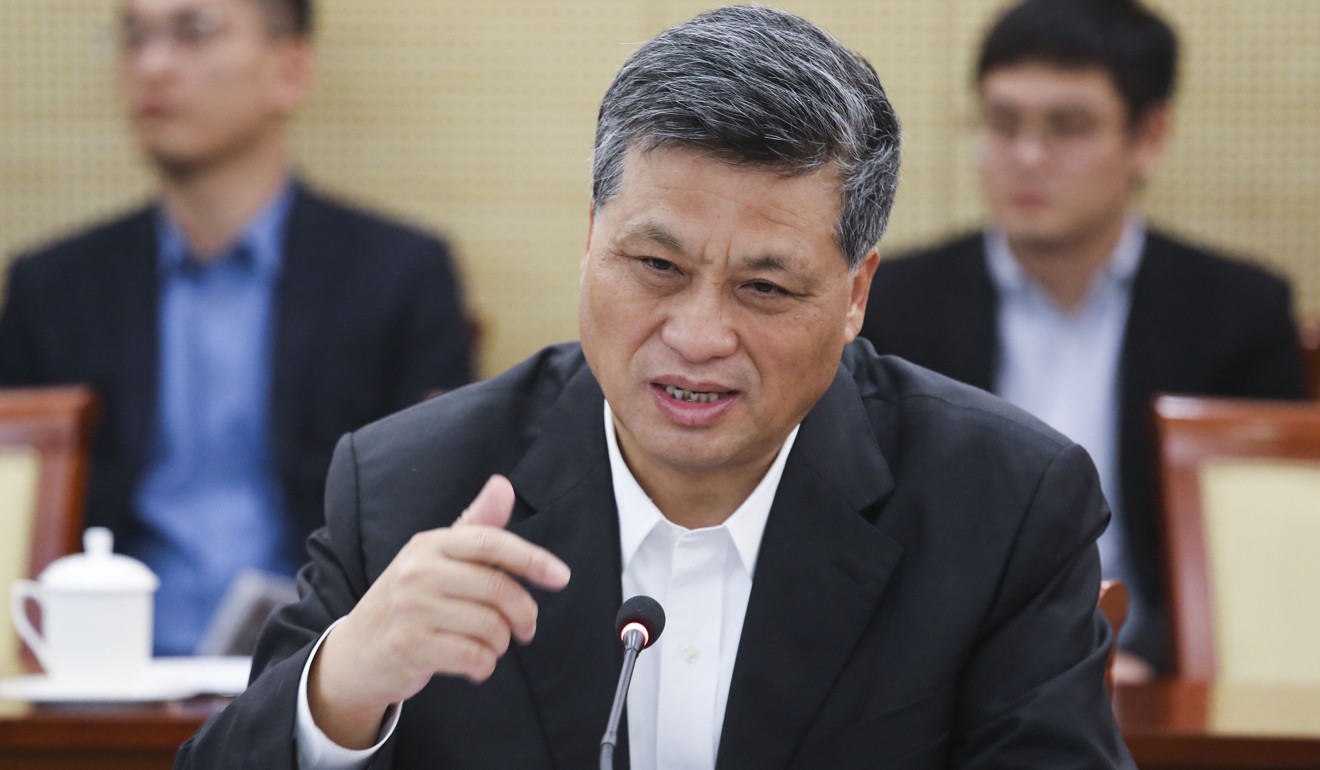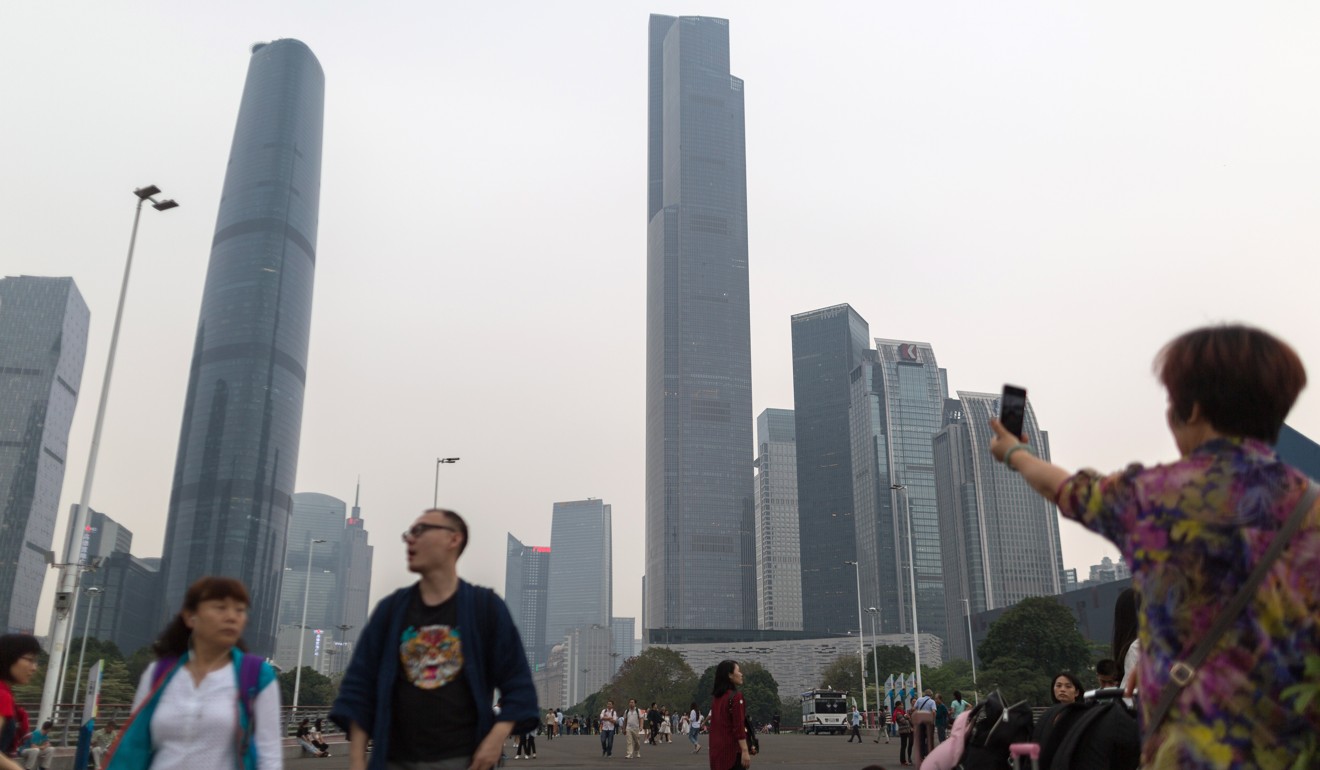
China’s industrial powerhouse Guangdong slashes growth target for 2019
- Southeastern province, which includes the cities of Shenzhen and Guangzhou, aims for 6.0-6.5 per cent growth this year
- The target is the same expected to be confirmed as China’s overall growth target for 2019 as the trade war with the United States continues to slow the economy
China’s main industrial powerhouse of Guangdong has lowered its main economic growth target for 2019 to a range of 6.0-6.5 per cent, matching the national target expected to be confirmed by Beijing in March.
Guangdong’s gross domestic product (GDP) grew by 6.8 per cent in 2018 to about 9.73 trillion yuan (US$1.44 trillion), governor Ma Xingrui said at the opening of the provincial people’s congress on Monday, having set a target of 7 per cent at the beginning of last year.
The province in the southeast of China, which includes the cities of Shenzhen and Guangzhou, saw a 7.5 per cent year-on-year GDP growth in 2017.
Shenzhen and Guangzhou also failed to meet their economic growth targets last year.
China’s growth target for 2019 was endorsed by top leaders at the annual closed-door Central Economic Work Conference in December, but will not be officially confirmed until annual parliamentary session in March.

In 2018, Shenzhen’s GDP increased by 7.5 per cent to about 2.4 trillion yuan (US$352.71 billion), having targeted a growth of 8 per cent.
Guangzhou’s GDP grew by 6.5 per cent last year, short of the 7.5 per cent target set at the beginning of the year.
Guangdong, meanwhile, also lowered its 2019 targets for retail sales to 8.5 per cent and foreign trade to 3 per cent.
Governor Ma also expects about 1.1 million new jobs to be created this year across the province from about 1.47 million in 2018.
The province’s private sector contributed about 54.1 per cent of the 2018 GDP figure, or around 5.26 trillion yuan, compared to 53 per cent in recent years.
Foreign trade, covering both imports and exports, grew by 5.1 per cent to reach around 7.16 trillion yuan.
Output growth of industrial enterprises, companies with annual revenue exceeding 20 million yuan (US$2.96 million) from their main businesses, reached 6.3 per cent.
Guangdong’s consumption failed to meet its growth target of 10 per cent as it reached only 8.8 per cent in 2018.
Ma pointed to the pressure and uncertainties arising from the economic downturn as well as weak growth in the innovative and emerging sectors.
This resulted in a lack of available talent and breakthroughs in the field of research and development, and core components and equipment still depending on imports, especially chips for the electronic information industry.
The hi-tech manufacturing sector also only contributed 31.5 per cent of output from companies with annual revenue of 20 million yuan or more from their main business operations, according to Ma’s report.

Shenzhen, known as China’s hi-tech hub and the home of tens of thousands of technology companies, also saw poor performance in key technology sectors.
The city’s strategic emerging industries – which includes such fields as information technology, biotechnology and new materials – contributed 37 per cent of the 2018 GDP figure, down from about 40 per cent in recent years, raising concerns if Shenzhen can reach its ambitious target to grow the emerging sectors to 42 per cent of GDP in 2020.
Ma made the construction of the Greater Bay Area a priority for 2019, with Guangdong a key player in the plan which involves 11 of China’s most urban cities, including Hong Kong, Macau, Shenzhen and Guangzhou.
He said the province would promote the construction of Hong-Kong-Shenzhen-Guangzhou-Macau scientific and technological innovation corridor, a number of laboratories jointly operated by institutes targeting breakthroughs in cutting edge technologies to support industries.
Ma also added that Guangdong would promote reforms and innovation in its free trade zones as China’s gateway to the world for opening up, while also making efforts to expand foreign trade, especially imports of core components and equipment.


